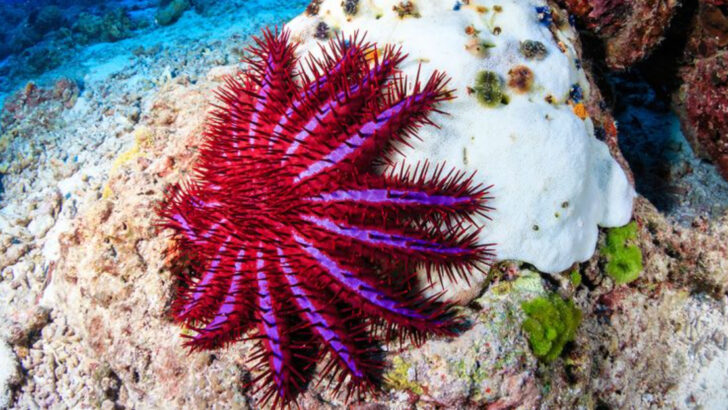The ocean doesn’t care if you’re brave. Beneath the waves lurk creatures that sting, bite, paralyze—or worse. Some glow beautifully before they strike. Others glide silently until it’s too late. And a few? They can end everything in under five minutes. This isn’t just about sharks. We’re diving deeper—to the jellyfish, snails, eels, and fish with venom so potent it makes cobras look tame. Here are 25 sea creatures ranked by how dangerous they really are—starting with mildly terrifying… and ending with flat-out deadly.
Box Jellyfish
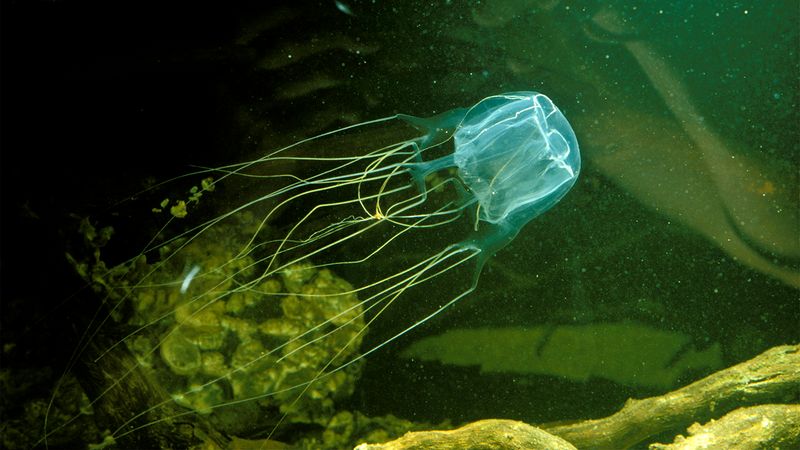
Gliding silently beneath the waves, the box jellyfish is a master of disguise. Its transparent body makes it nearly invisible in the water. This creature is notorious for its venom, which can cause heart failure in minutes. A single sting delivers a potent cocktail of toxins that can paralyze and kill small fish instantly. Its tentacles are loaded with thousands of nematocysts, ready to fire at the slightest touch. Despite its deadly nature, the box jellyfish is a vital part of the marine ecosystem, helping control fish populations.
Stonefish
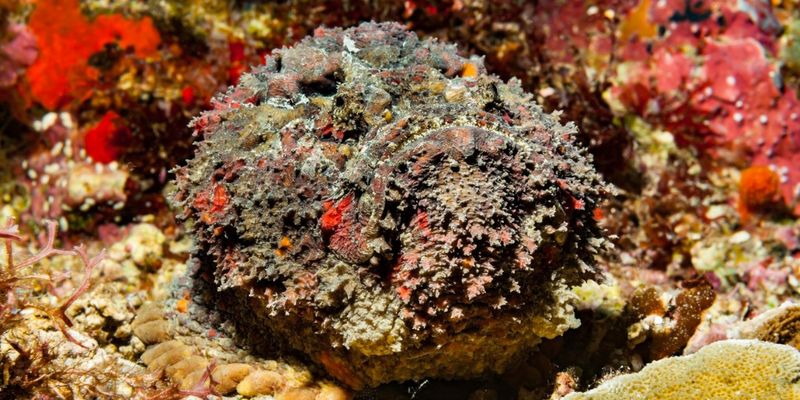
Lurking on the ocean floor, the stonefish is a master of camouflage. Its bumpy, rock-like appearance allows it to blend seamlessly with its surroundings, making it a formidable ambush predator. With venomous spines lining its back, a step on this fish can lead to excruciating pain, paralysis, or even death. This fish doesn’t chase prey; instead, it waits patiently, striking with lightning speed. Despite its dangerous reputation, the stonefish plays a crucial role in maintaining the balance of marine ecosystems.
Blue-Ringed Octopus
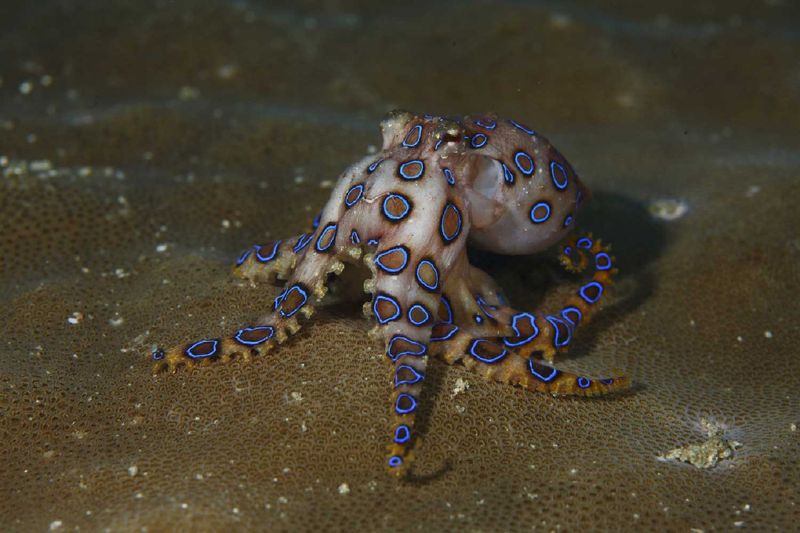
With its vibrant blue rings flashing a warning, the blue-ringed octopus is both beautiful and deadly. Found in the tide pools of the Pacific and Indian Oceans, its bite can cause paralysis and respiratory failure. The venom contains tetrodotoxin, a potent neurotoxin. Despite its size, no bigger than a golf ball, it holds enough venom to kill 26 humans within minutes. Usually shy, it only shows aggression when threatened. This octopus is a reminder of the ocean’s hidden dangers.
Great White Shark
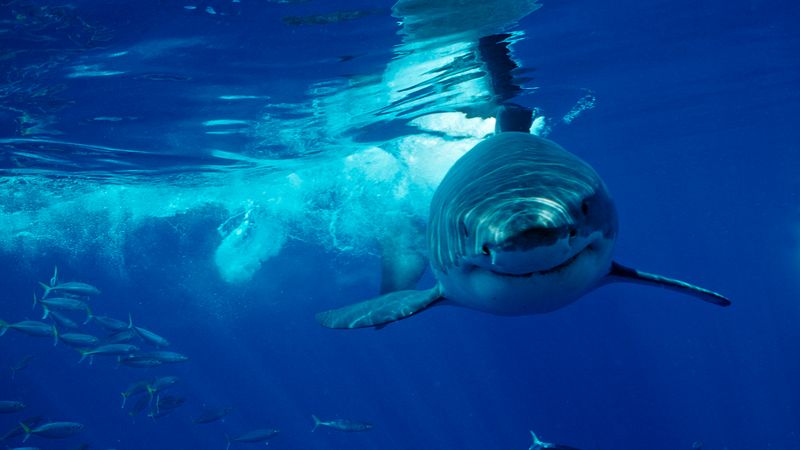
Feared by many, the great white shark is the ocean’s top predator. With powerful jaws and rows of razor-sharp teeth, it can inflict devastating injuries. Great whites are known for their curiosity and intelligence; they often investigate unfamiliar objects with a test bite. Although attacks on humans are rare, their sheer size and power make them formidable. They play a vital role in maintaining the health of the ocean ecosystem by controlling the population of other marine animals.
Saltwater Crocodile
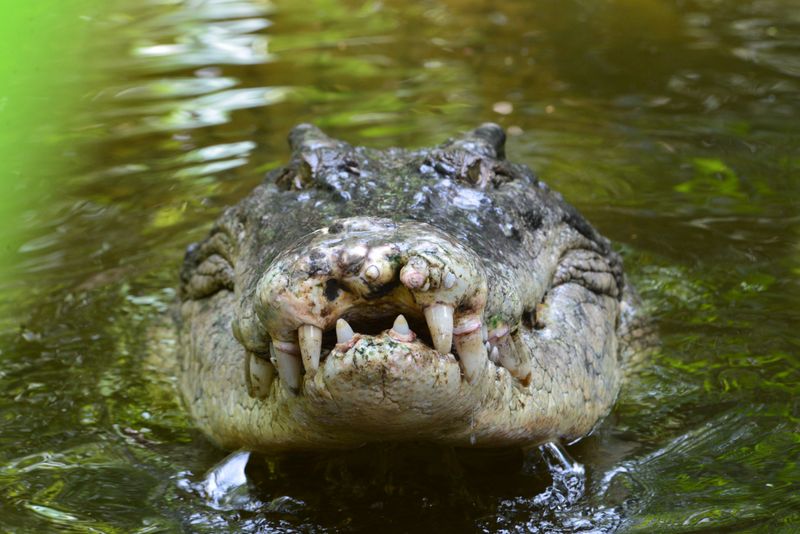
The saltwater crocodile is a fearsome predator, ruling the waters of Northern Australia and Southeast Asia. Capable of growing over 20 feet, it can take down large prey with a death roll technique. Its ambush strategy is precise; it waits in silence, then strikes with explosive force. Though primarily aquatic, it can traverse land in search of new territories. While encounters with humans are dangerous, these crocodiles have existed for millions of years, adapting to various environments.
Pufferfish
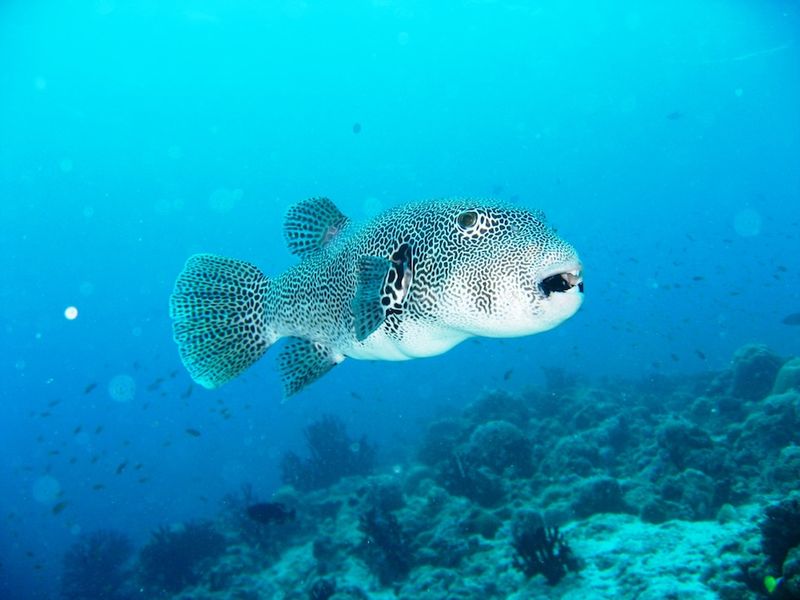
Pufferfish are known for their ability to inflate and deter predators with their spiky appearance. However, their true danger lies in their flesh, which contains tetrodotoxin—a potent poison. This toxin is 1,200 times more lethal than cyanide and can cause paralysis and death. Despite this, pufferfish are considered a delicacy in Japan, where chefs train for years to prepare them safely. Their unique defense mechanism and toxic nature make them fascinating yet risky sea creatures.
Cone Snail
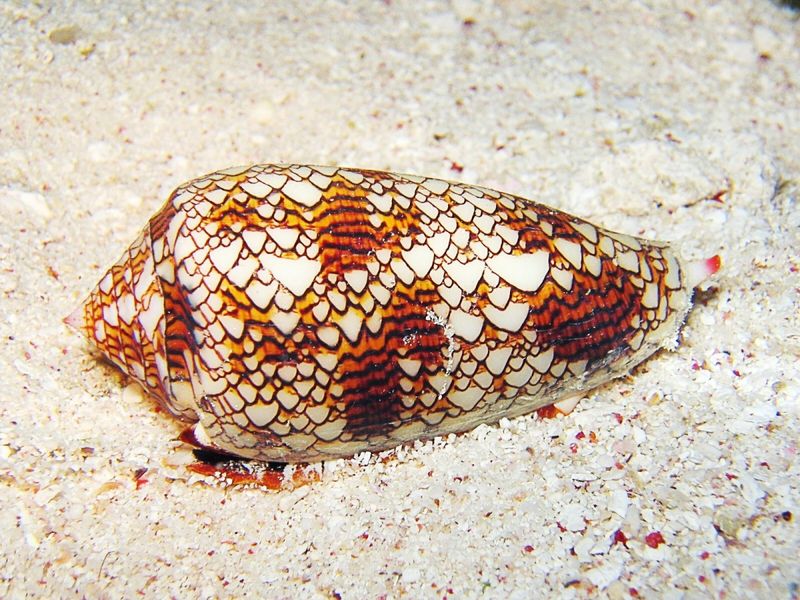
The cone snail may appear unassuming, but it harbors a deadly secret. Its beautiful shell hides a harpoon-like tooth capable of delivering venom potent enough to kill humans. This venom contains conotoxins, which can cause respiratory paralysis. It hunts using a rapid strike, injecting prey with a cocktail of toxins. Despite its lethal nature, research on cone snail venom has led to medical breakthroughs, including painkillers. This small snail is both a threat and a hope for future medicine.
Lionfish
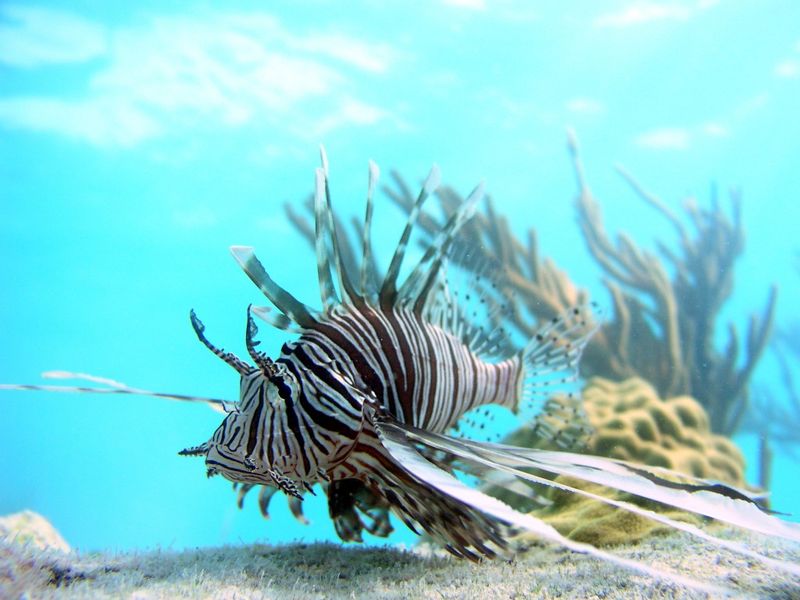
The lionfish is renowned for its beauty and venomous spines. Native to the Indo-Pacific, it has invaded other oceans, causing ecological havoc. Its spines can deliver a painful sting, although not usually fatal to humans. The lionfish’s presence threatens local species, as it has few natural predators in non-native waters. Its ability to reproduce rapidly and adapt to new environments makes it a formidable invader. Efforts are underway to control its spread and protect marine biodiversity.
Sea Snake
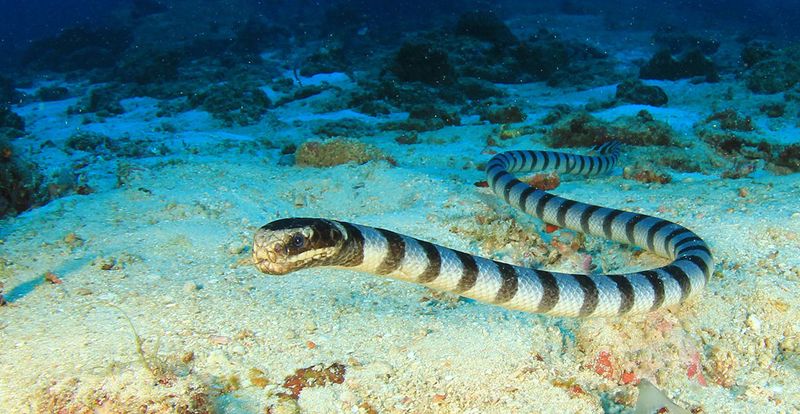
Sea snakes, while generally non-aggressive, possess some of the most potent venom among snakes. Found in warm coastal waters, their venom is more toxic than that of most terrestrial snakes. They are adapted for aquatic life, with paddle-like tails and the ability to hold their breath underwater. While bites are rare, caution is advised when encountering these serpents. Despite their dangerous potential, sea snakes play a vital role in the marine food chain, preying on fish and eels.
Portuguese Man o’ War
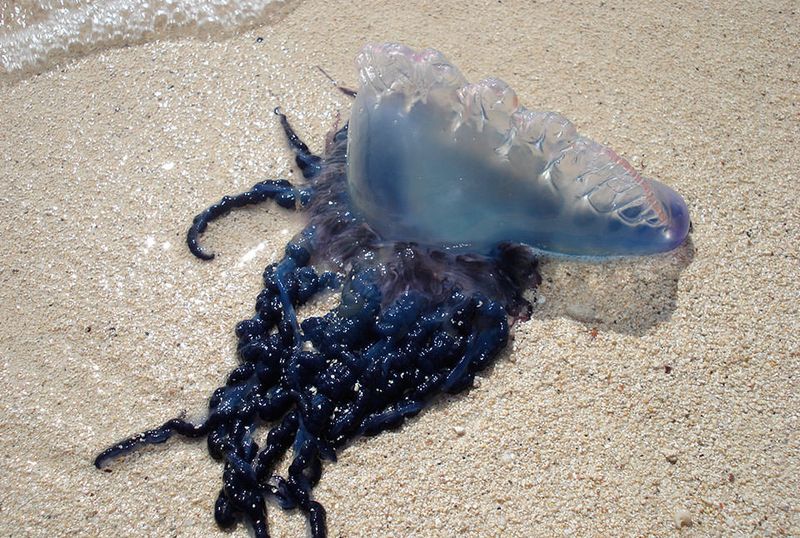
Often mistaken for a jellyfish, the Portuguese Man o’ War is a colony of organisms working in unison. Its long tentacles can deliver painful stings that cause welts and, in severe cases, trigger allergic reactions. The venom can paralyze small fish, which it then consumes. While not usually lethal to humans, their stings are notorious for their severity. These creatures drift with the current, their translucent sails catching the wind. They remind us of the surprising dangers lurking beneath the sea’s surface.
Tiger Shark
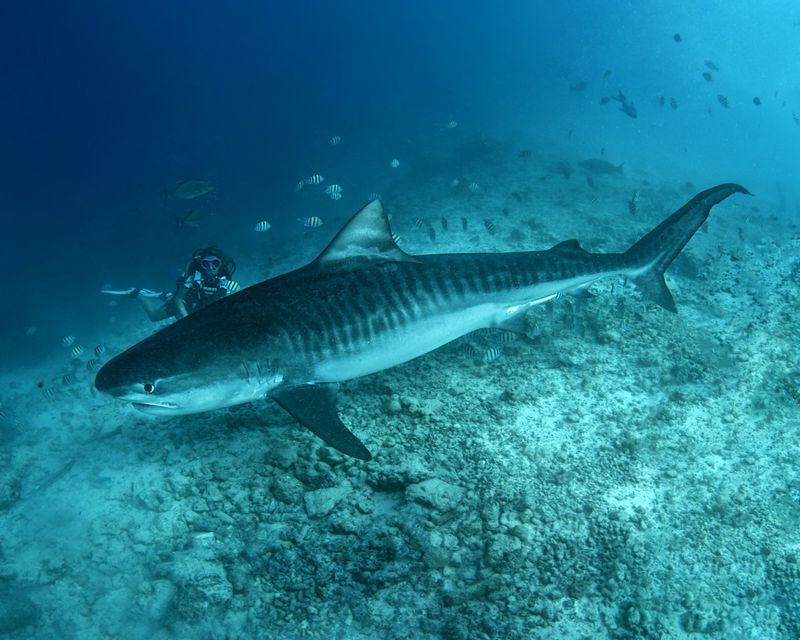
The tiger shark, named for its dark stripes, is a formidable predator. It is known for its indiscriminate feeding habits, earning it the nickname “wastebasket of the sea.” Found in tropical and temperate waters, it preys on fish, seals, and even garbage. While attacks on humans are rare, they are the second most common after great whites. The tiger shark’s role is crucial in maintaining the balance of the ocean’s ecosystems, often considered an indicator of marine health.
Electric Eel
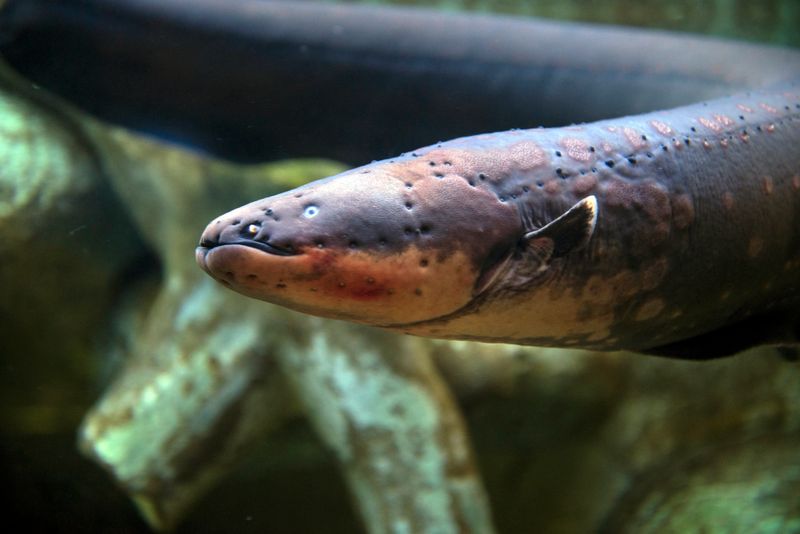
Despite its name, the electric eel is more closely related to catfish than eels. It resides in South America’s rivers, capable of generating powerful electric shocks. These shocks, used for hunting and defense, can reach up to 600 volts. While not usually lethal to humans, the shocks can cause heart failure in vulnerable individuals. This extraordinary ability makes the electric eel a subject of scientific interest, inspiring research into bioelectricity. It exemplifies nature’s inventiveness and the hidden power within.
Crown-of-Thorns Starfish
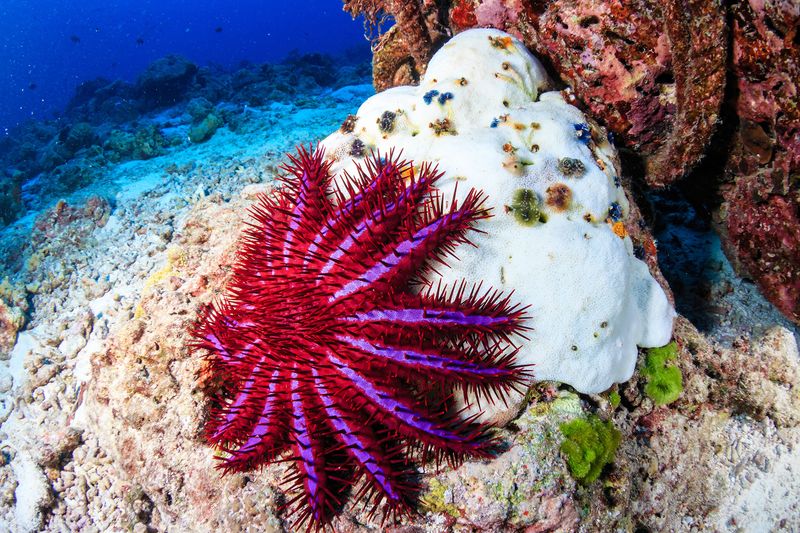
The crown-of-thorns starfish, with its spiny appearance, is one of the ocean’s most destructive coral predators. Feeding on coral polyps, it can devastate entire reefs if left unchecked. Its spines, containing venom, can cause painful wounds to humans. Outbreaks occur when natural predators are missing, leading to significant reef damage. Efforts are made to control their population to protect coral ecosystems. Despite their destructive nature, these starfish play a role in coral reef dynamics, promoting diversity by preventing coral dominance.
Moray Eel
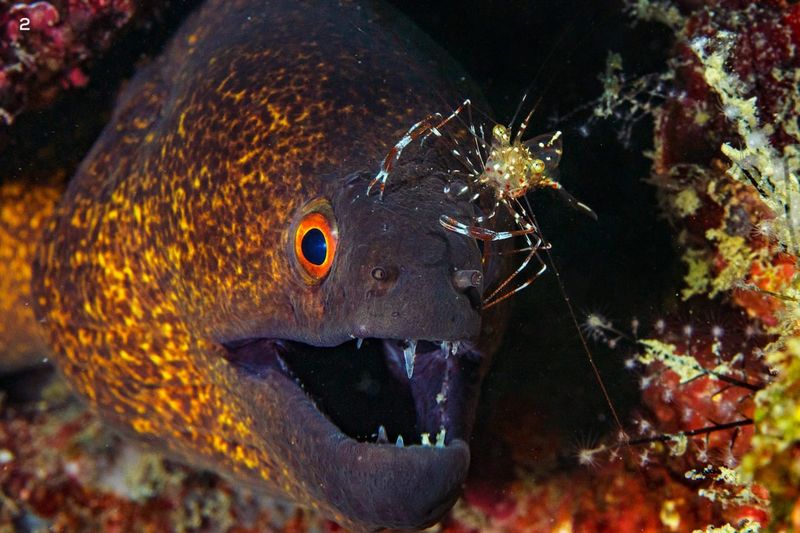
Hidden within the crevices of coral reefs, the moray eel is a stealthy predator. With elongated bodies and sharp teeth, they strike with precision. Despite their fearsome appearance, morays are generally shy, only attacking when provoked. Their mucus-covered skin provides protection, and their ability to swim backward makes them agile hunters. Moray eels contribute to the balance of coral reef ecosystems by controlling fish populations. Their unique adaptations make them fascinating, yet formidable creatures of the deep.
Stingray
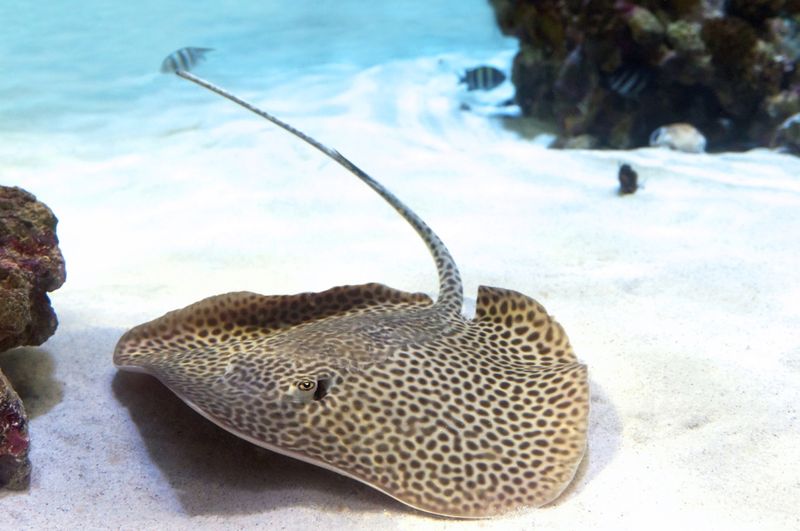
With their flat bodies and graceful movements, stingrays are often seen gliding along the ocean floor. However, their barbed tails can deliver painful, sometimes lethal stings. These barbs, covered in venom, are used for defense rather than hunting. While stingray attacks are rare, they can be dangerous to unsuspecting swimmers. Despite their defensive capabilities, stingrays play a vital role in their environment, using their disc-like bodies to stir up sediment and feed on buried prey.
Giant Pacific Octopus
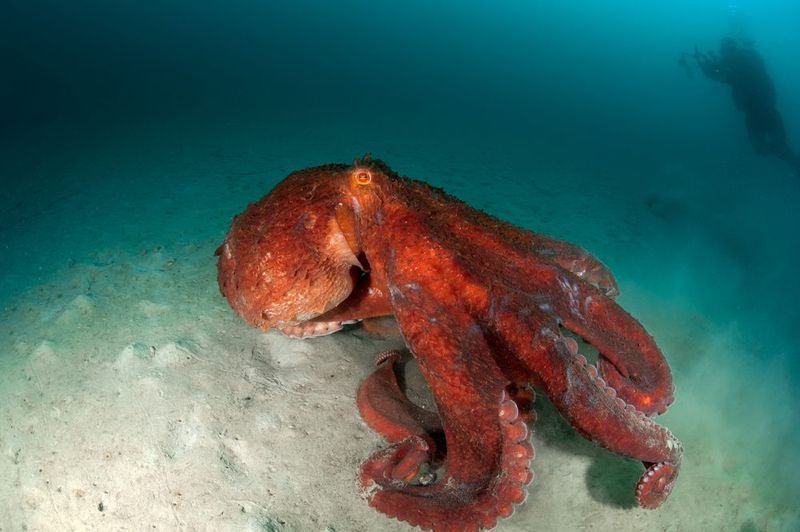
The giant Pacific octopus, known for its intelligence and size, inhabits the cold waters of the North Pacific. It uses its tentacles with dexterity, capable of opening jars and solving puzzles. While not inherently dangerous, its strength and curiosity can be intimidating. Encounters with humans are rare, and attacks are usually defensive. These octopuses are masters of disguise, changing color and texture to blend with their surroundings. Their remarkable abilities make them both a wonder and a cautionary tale of the ocean depths.
Barracuda
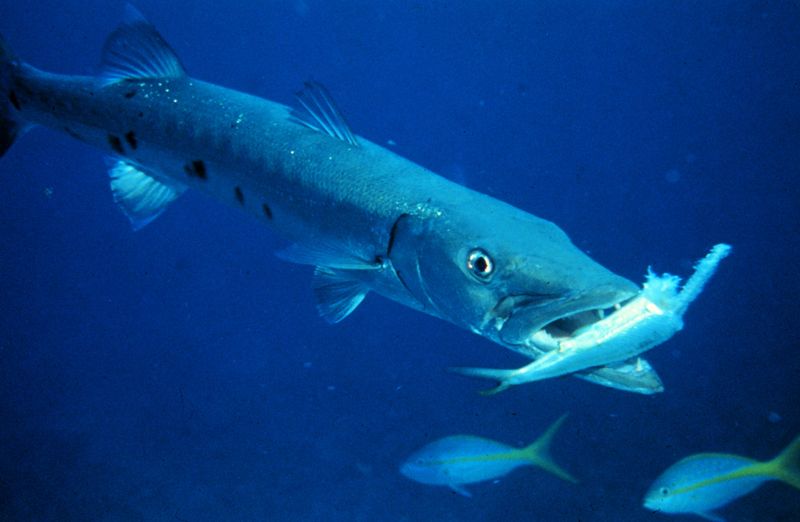
The barracuda, with its torpedo-shaped body, is known for its speed and agility. It hunts with a burst of energy, often in schools, preying on smaller fish. While not usually dangerous to humans, their sharp teeth and curious nature can lead to accidental bites. Barracudas are often attracted to shiny objects, mistaking them for prey. These fish are vital to the marine food chain, controlling fish populations and maintaining the health of coral reefs. Their presence is a testament to the ocean’s dynamic ecosystem.
Sea Urchin
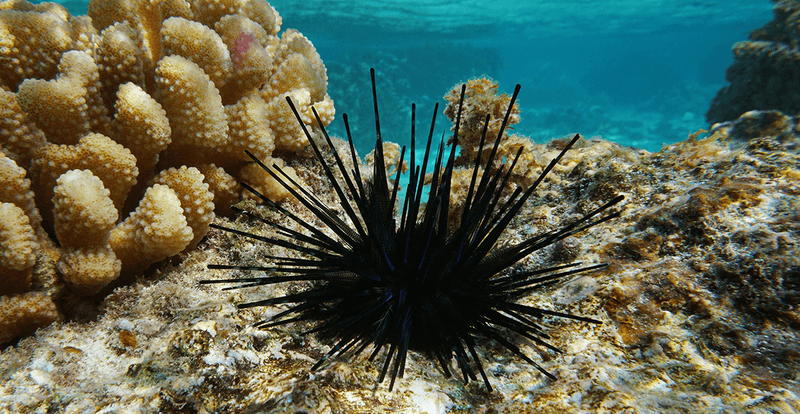
Sea urchins, with their spiky shells, are a common sight on rocky ocean floors. While not inherently aggressive, stepping on an urchin can result in painful puncture wounds. Some species have venomous spines, capable of causing severe pain and allergic reactions. Sea urchins play a crucial role in their ecosystems, grazing on algae and helping maintain the health of coral reefs. Despite their prickly exterior, they are an essential part of marine biodiversity, contributing to the balance of underwater habitats.
Orca
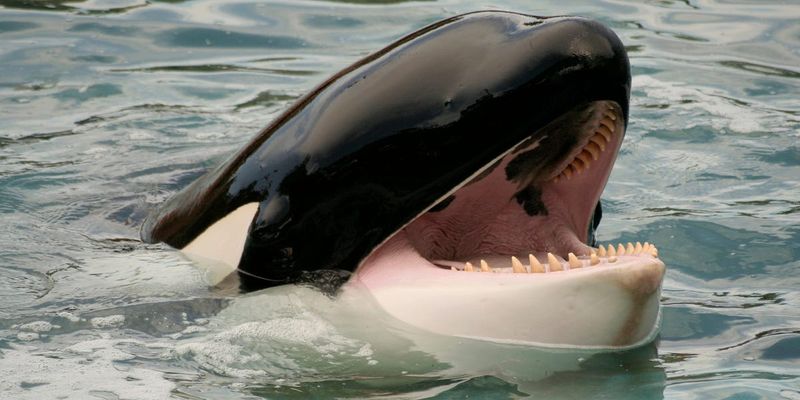
The orca, or killer whale, is one of the ocean’s top predators. Known for their intelligence and social structures, orcas hunt in pods, using coordinated strategies to catch prey. While they are not typically dangerous to humans, their sheer size and power command respect. Orcas are apex predators, preying on fish, seals, and even other whales. Their presence indicates a healthy marine environment. These majestic creatures are a reminder of the ocean’s intricate balance and the importance of preserving marine habitats.
Japanese Spider Crab
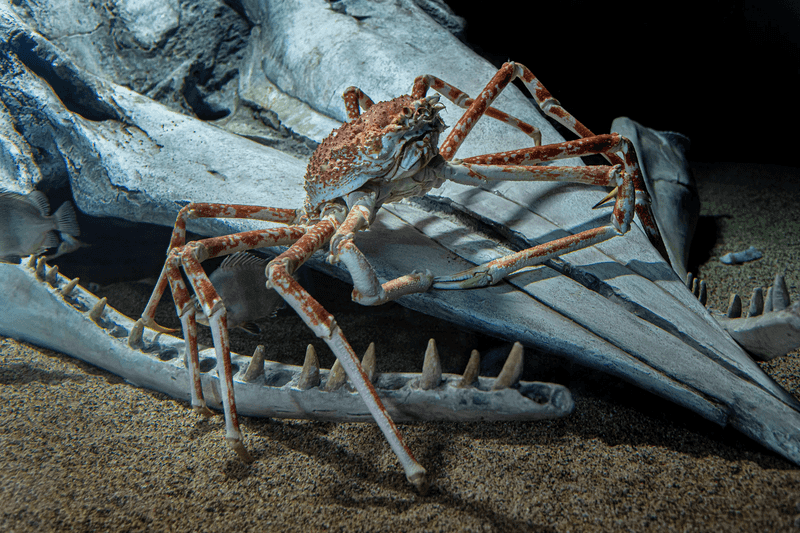
With legs spanning up to 12 feet, the Japanese spider crab is the largest arthropod in the ocean. Found in the waters around Japan, it uses its long limbs to scavenge for food. Despite its menacing appearance, it poses little threat to humans. These crabs are considered a delicacy, often featured in traditional festivals. Their unique anatomy and gentle nature make them fascinating subjects of marine study. The spider crab is a testament to the ocean’s diversity and the wonders of evolutionary adaptation.
Leopard Seal
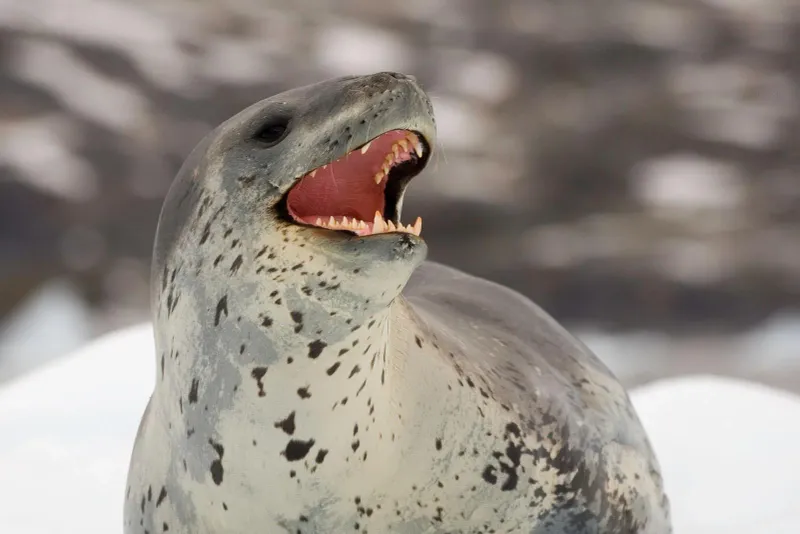
The leopard seal, with its sleek, spotted coat, is the Antarctic’s top predator. It preys on penguins and other seals, using powerful jaws to capture prey. Encounters with humans are rare, but they are known for their aggressive hunting style. Leopard seals play a critical role in the Antarctic ecosystem, helping maintain the balance of marine populations. Their adaptability to harsh environments showcases the resilience of life in extreme conditions. These seals are a reminder of the wild and untamed nature of our planet’s polar regions.
Vampire Squid
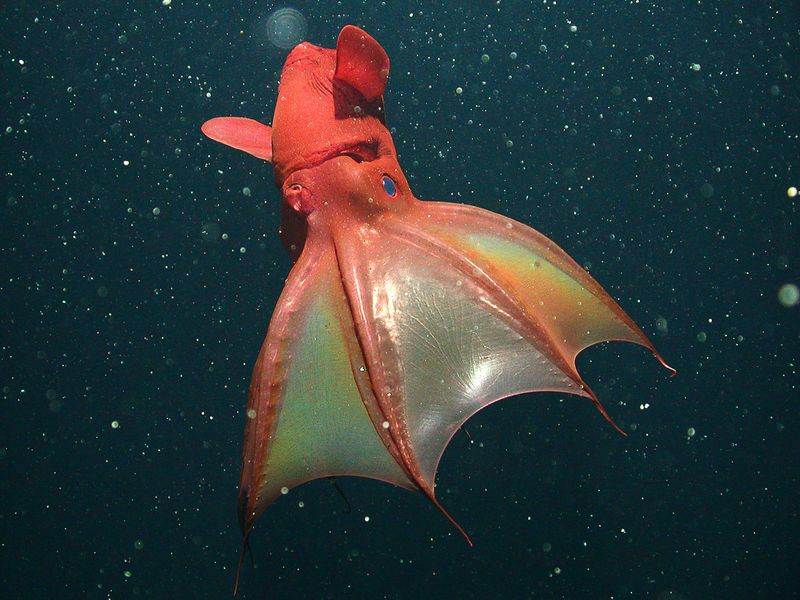
The vampire squid, with its eerie red color and webbed arms, dwells in the deep ocean’s twilight zone. Unlike its name suggests, it is not a bloodsucker, but a detritus feeder, consuming marine snow. Its bioluminescent displays confuse predators, allowing it to escape. The vampire squid has unique adaptations for low-oxygen environments, showcasing the marvel of deep-sea evolution. Though not dangerous to humans, its mysterious appearance and survival strategies make it a captivating creature of the deep.
Triggerfish
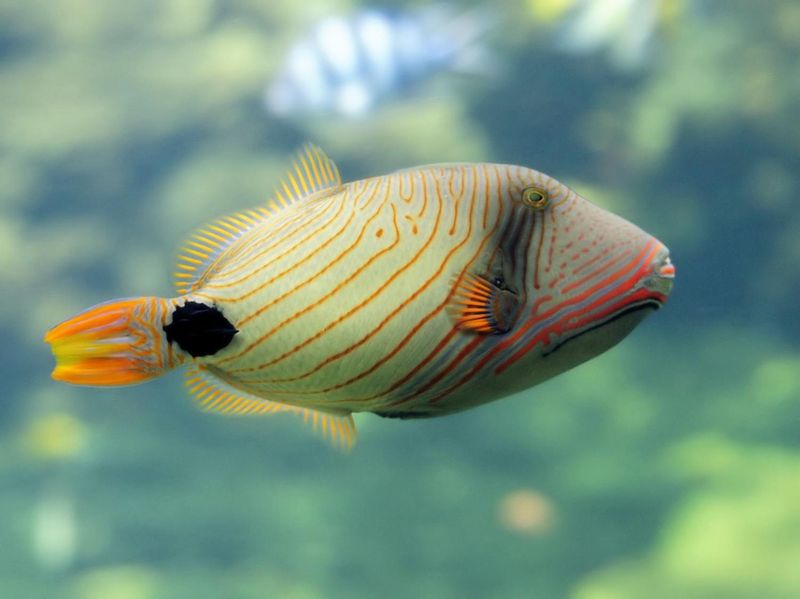
Triggerfish, known for their vibrant colors and strong personalities, are prevalent in coral reef environments. When threatened, they extend a dorsal spine to deter predators. While not typically dangerous, they can become aggressive during breeding season, protecting their nests fiercely. Triggerfish contribute to the ecosystem by controlling sea urchin populations, which helps preserve coral health. Their striking appearance and territorial nature make them a notable component of reef biodiversity, reflecting the complex dynamics of marine life.
Stone Scorpionfish
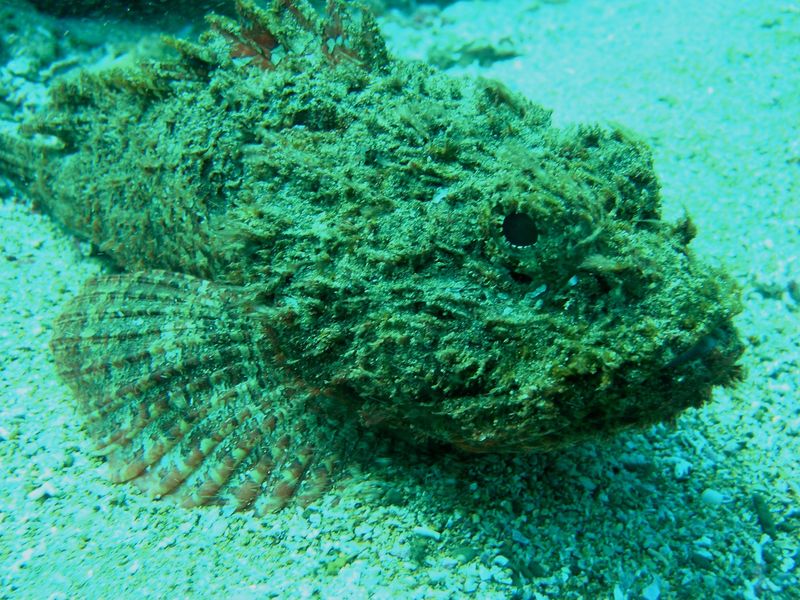
The stone scorpionfish, with its excellent camouflage, is a master of disguise. Its spiky body blends seamlessly with the ocean floor, making it a stealthy predator. Equipped with venomous spines, a sting from this fish can cause intense pain and swelling. Despite its intimidating defenses, it plays a role in controlling prey populations on the reef. The stone scorpionfish exemplifies nature’s ingenuity in survival, adapting perfectly to its environment. Its presence highlights the intricate web of marine life and the delicate balance of coral ecosystems.
Irukandji Jellyfish
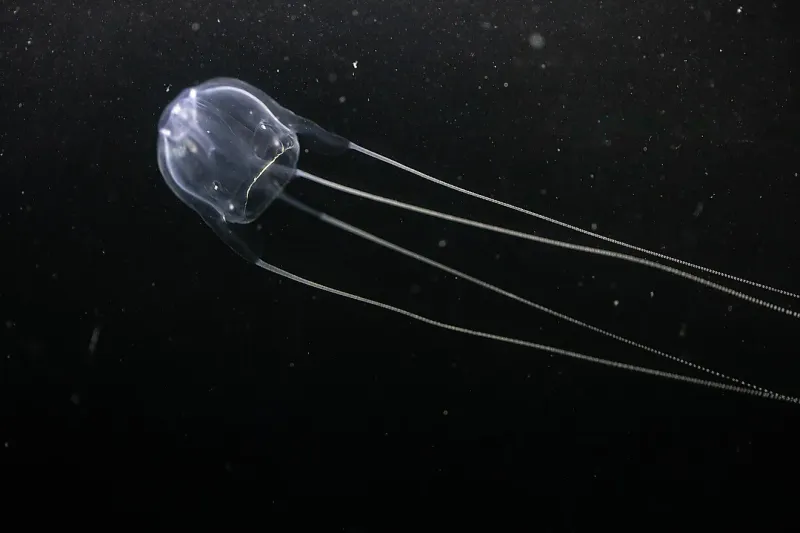
The Irukandji jellyfish, although tiny, is one of the most venomous creatures in the sea. With a bell size of just one cubic centimeter, it might look harmless, but its sting is a different story. This jellyfish is known for causing “Irukandji syndrome,” a condition that brings on severe pain, nausea, and heart complications.
Found primarily in the waters of northern Australia, it poses a serious threat to swimmers. A single sting can result in hospitalization, with symptoms appearing long after contact.
A fun fact: the venom of the Irukandji jellyfish is 100 times more potent than that of a cobra.

